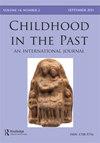Educating a ‘Creative Class’: Anti-Disciplinary School Architecture in the Early 1970s
IF 0.5
Q3 ANTHROPOLOGY
引用次数: 1
Abstract
ABSTRACT In 1970, Sim Van der Ryn, professor of architecture at the University of California in Berkeley, together with a group of collaborators, who included the schoolchildren themselves, embarked on a series of experiments in alternative school designs. The emphasis was on breaking down the institutional spatial order into smaller, ad hoc, personalised spaces, or else spaces for unexpected encounters. By the early 1970s, a new generation of architects had begun to critique what they considered to be the repressive ideological apparatus of the classroom, with its rigid seating arrangements, furnishings, lesson plans, and hourly divisions – in short, the whole pedagogical apparatus of what Michel Foucault called the ‘disciplinary society’. While this and similar experiments, I argue, had limited effect on subsequent school buildings, most of which remained institutionally conventional, they foreshadowed the work spaces of new companies in Silicon Valley and elsewhere that promoted creativity and collaboration among elite employees.培养“创造性课堂”:20世纪70年代初的反学科学校建筑
摘要1970年,加州大学伯克利分校建筑系教授Sim Van der Ryn和包括学生在内的一群合作者开始了一系列替代学校设计的实验。重点是将机构的空间秩序分解为更小的、临时的、个性化的空间,或者用于意外相遇的空间。到20世纪70年代初,新一代建筑师开始批评他们认为压抑的课堂意识形态装置,包括僵硬的座位安排、家具、课程计划和每小时的划分——简而言之,就是米歇尔·福柯所说的“学科社会”的整个教学装置。我认为,虽然这项实验和类似的实验对随后的学校建筑影响有限,其中大多数仍然是制度上的传统,但它们预示着硅谷和其他地方新公司的工作空间将促进精英员工的创造力和协作。
本文章由计算机程序翻译,如有差异,请以英文原文为准。
求助全文
约1分钟内获得全文
求助全文
来源期刊

Childhood in the Past
Social Sciences-Anthropology
CiteScore
0.90
自引率
0.00%
发文量
16
期刊介绍:
Childhood in the Past provides a peer-reviewed, interdisciplinary, international forum for the publication of research into all aspects of children and childhood in the past, which transcends conventional intellectual, disciplinary, geographical and chronological boundaries. The editor welcomes offers of papers from any field of study which can further knowledge and understanding of the nature and experience of childhood in the past.
 求助内容:
求助内容: 应助结果提醒方式:
应助结果提醒方式:


